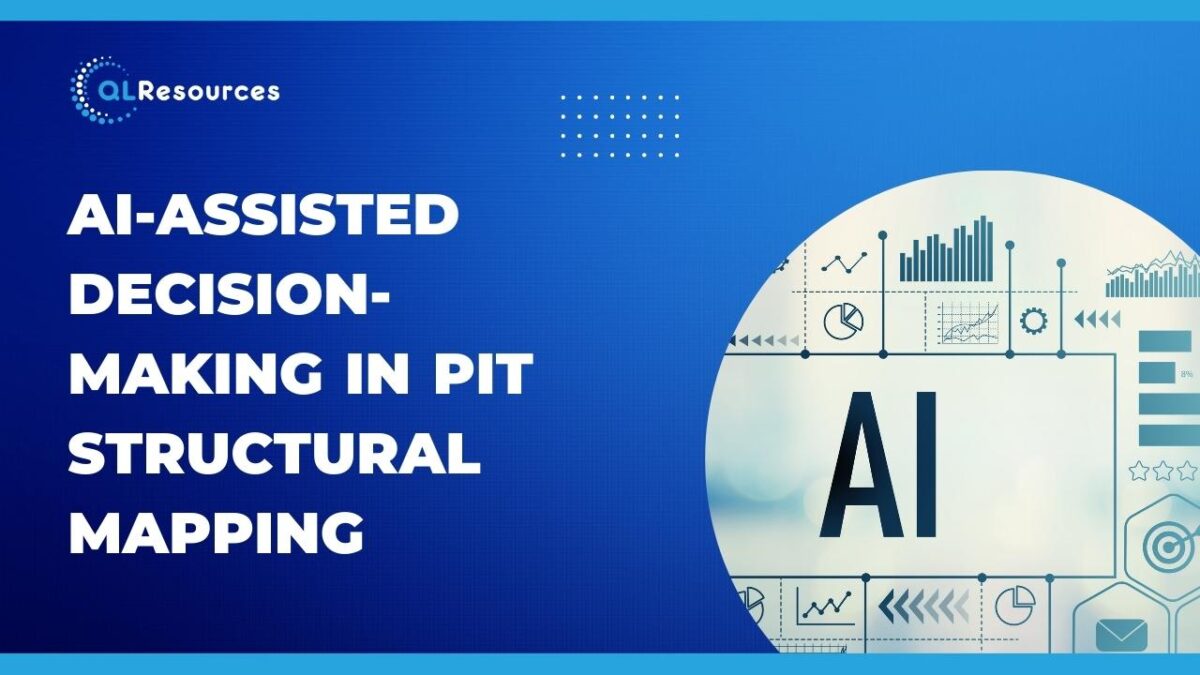The mining industry is rapidly adopting artificial intelligence (AI) and machine learning (ML) technologies to improve various aspects of their operations, including pit structural mapping. With the increasing demand for minerals and the depletion of easily accessible deposits, it is more important than ever to improve the efficiency, safety, and accuracy of mining operations. In this blog post, we will explore how AI-assisted decision-making is transforming pit structural mapping in the mining industry.
1. Identifying Structural Features
Pit structural mapping involves identifying geological features such as faults, dykes, and other structures that may affect mining operations. Traditionally, this has been a labor-intensive and time-consuming process that involves extensive surveys and analysis. AI and ML algorithms can automate this process by analysing various data sources such as satellite imagery, lidar, and ground-penetrating radar data. This allows mining companies to create accurate and comprehensive maps of the pit, identifying potential hazards and opportunities for resource extraction.
2. Predictive Analytics
AI and ML technologies can help mining companies develop predictive models to anticipate potential hazards in the pit. For example, AI algorithms can analyse historical data to identify areas that are at high risk of collapse or other geological events. This can help mining companies take preventive measures to avoid accidents and ensure the safety of their workers. Predictive analytics can also help optimise mining operations by identifying the best locations for resource extraction and predicting the quality and quantity of the minerals.
3. Automated Drone Surveys
Mining companies are increasingly using autonomous drones to survey pits and gather data about the geological structure. These drones can be equipped with various sensors and cameras to capture high-resolution data that can be analysed by AI and ML algorithms. Automated drone surveys are faster and safer than traditional surveys, as they do not require human operators to be physically present in the pit. This not only improves safety but also saves time and reduces costs.
4. Real-time Monitoring
Real-time monitoring is an important aspect of pit structural mapping, as it allows mining companies to respond quickly to potential hazards. AI and ML algorithms can analyse data from various sources, including sensors and cameras in the pit, to detect changes in the geological structure. This enables mining companies to take preventive measures in real-time, reducing the risk of accidents and improving the safety of their workers.
5. Integration with Other Technologies
Pit structural mapping is just one aspect of mining operations, and it needs to be integrated with other technologies such as autonomous vehicles, sensors, and predictive maintenance systems. AI and ML algorithms can help integrate these technologies by analysing data from multiple sources and making informed decisions. For example, predictive maintenance systems can be integrated with pit structural mapping to identify potential equipment failures and prevent downtime.
In conclusion, AI and ML technologies are transforming the way pit structural mapping is done in the mining industry. By automating the process of identifying structural features, using predictive analytics, automating drone surveys, real-time monitoring, and integrating with other technologies, mining companies can improve the safety, efficiency, and accuracy of their operations. The adoption of AI and ML technologies is only going to increase in the mining industry as companies strive to increase the profitability of their operations while ensuring the safety of their workers and minimising the impact on the environment.
